目录
一、前言
二、我的环境
三、代码实现
1、数据下载以及可视化
2、CNN模型
3、训练结果可视化
4、随机图像预测
四、模型优化
1、CNN模型
2、VGG-16模型
3、Alexnet模型
4、Resnet模型
一、前言
>- **🍨 本文为[🔗365天深度学习训练营](https://mp.weixin.qq.com/s/xLjALoOD8HPZcH563En8bQ) 中的学习记录博客**
>- **🍦 参考文章:365天深度学习训练营-第P2周:彩色图片识别(训练营内部成员可读)**
>- **🍖 原作者:[K同学啊|接辅导、项目定制](https://mtyjkh.blog.csdn.net/)**● 难度:夯实基础⭐⭐
● 语言:Python3、Pytorch3
● 时间:11月26日-12月2日
🍺 要求:
1. 自己搭建CNN网络框架
2. 调用官方的VGG-16网络框架
🍻 拔高(可选):
1. 验证集准确率达到85%
2. 使用PPT画出VGG-16算法框架图
二、我的环境
语言环境:Python3.7
编译器:jupyter notebook
深度学习环境:TensorFlow2
三、代码实现
# 设置GPU
import copy
import torch
import torch.nn as nn
import matplotlib.pyplot as plt
from torchvision import datasets, transforms, models
import torchvision
import random
device = torch.device("cuda" if torch.cuda.is_available() else "cpu")
device
# 导入数据
train_ds = torchvision.datasets.CIFAR10('data',
train=True,
transform=torchvision.transforms.ToTensor(), # 将数据类型转化为Tensor
download=True)
test_ds = torchvision.datasets.CIFAR10('data',
train=False,
transform=torchvision.transforms.ToTensor(), # 将数据类型转化为Tensor
download=True)
batch_size = 32
train_dl = torch.utils.data.DataLoader(train_ds,
batch_size=batch_size,
shuffle=True)
test_dl = torch.utils.data.DataLoader(test_ds,
batch_size=batch_size)
# 取一个批次查看数据格式
# 数据的shape为:[batch_size, channel, height, weight]
# 其中batch_size为自己设定,channel,height和weight分别是图片的通道数,高度和宽度。
imgs, labels = next(iter(train_dl))
imgs.shape
import numpy as np
# 指定图片大小,图像大小为20宽、5高的绘图(单位为英寸inch)
plt.figure(figsize=(20, 5))
for i, imgs in enumerate(imgs[:20]):
# 维度缩减
npimg = imgs.numpy().transpose((1, 2, 0))
# 将整个figure分成2行10列,绘制第i+1个子图。
plt.subplot(2, 10, i + 1)
plt.imshow(npimg, cmap=plt.cm.binary)
plt.axis('off')
# 构建CNN网络
import torch.nn.functional as F
num_classes = 10 # 图片的类别数
class Model(nn.Module):
def __init__(self):
super().__init__()
# 特征提取网络
self.conv1 = nn.Conv2d(3, 64, kernel_size=3) # 第一层卷积,卷积核大小为3*3
self.pool1 = nn.MaxPool2d(kernel_size=2) # 设置池化层,池化核大小为2*2
self.conv2 = nn.Conv2d(64, 64, kernel_size=3) # 第二层卷积,卷积核大小为3*3
self.pool2 = nn.MaxPool2d(kernel_size=2)
self.conv3 = nn.Conv2d(64, 128, kernel_size=3) # 第二层卷积,卷积核大小为3*3
self.pool3 = nn.MaxPool2d(kernel_size=2)
# 分类网络
self.fc1 = nn.Linear(512, 256)
self.fc2 = nn.Linear(256, num_classes)
# 前向传播
def forward(self, x):
x = self.pool1(F.relu(self.conv1(x)))
x = self.pool2(F.relu(self.conv2(x)))
x = self.pool3(F.relu(self.conv3(x)))
x = torch.flatten(x, start_dim=1)
x = F.relu(self.fc1(x))
x = self.fc2(x)
return x
from torchinfo import summary
# 将模型转移到GPU中(我们模型运行均在GPU中进行)
model = Model().to(device)
summary(model)
# 设置超参数
loss_fn = nn.CrossEntropyLoss() # 创建损失函数
learn_rate = 1e-2 # 学习率
opt = torch.optim.SGD(model.parameters(), lr=learn_rate)
# 编写训练函数
# 训练循环
def train(dataloader, model, loss_fn, optimizer):
size = len(dataloader.dataset) # 训练集的大小,一共60000张图片
num_batches = len(dataloader) # 批次数目,1875(60000/32)
train_loss, train_acc = 0, 0 # 初始化训练损失和正确率
for X, y in dataloader: # 获取图片及其标签
X, y = X.to(device), y.to(device)
# 计算预测误差
pred = model(X) # 网络输出
loss = loss_fn(pred, y) # 计算网络输出和真实值之间的差距,targets为真实值,计算二者差值即为损失
# 反向传播
optimizer.zero_grad() # grad属性归零
loss.backward() # 反向传播
optimizer.step() # 每一步自动更新
# 记录acc与loss
train_acc += (pred.argmax(1) == y).type(torch.float).sum().item()
train_loss += loss.item()
train_acc /= size
train_loss /= num_batches
return train_acc, train_loss
# 编写测试函数
def test(dataloader, model, loss_fn):
size = len(dataloader.dataset) # 测试集的大小,一共10000张图片
num_batches = len(dataloader) # 批次数目,313(10000/32=312.5,向上取整)
test_loss, test_acc = 0, 0
# 当不进行训练时,停止梯度更新,节省计算内存消耗
with torch.no_grad():
for imgs, target in dataloader:
imgs, target = imgs.to(device), target.to(device)
# 计算loss
target_pred = model(imgs)
loss = loss_fn(target_pred, target)
test_loss += loss.item()
test_acc += (target_pred.argmax(1) == target).type(torch.float).sum().item()
test_acc /= size
test_loss /= num_batches
return test_acc, test_loss
epochs = 10
train_loss = []
train_acc = []
test_loss = []
test_acc = []
for epoch in range(epochs):
model.train()
epoch_train_acc, epoch_train_loss = train(train_dl, model, loss_fn, opt)
model.eval()
epoch_test_acc, epoch_test_loss = test(test_dl, model, loss_fn)
# 保存最优模型
if epoch_test_acc > best_acc:
best_acc = epoch_test_acc
best_model = copy.deepcopy(model)
train_acc.append(epoch_train_acc)
train_loss.append(epoch_train_loss)
test_acc.append(epoch_test_acc)
test_loss.append(epoch_test_loss)
template = ('Epoch:{:2d}, Train_acc:{:.1f}%, Train_loss:{:.3f}, Test_acc:{:.1f}%,Test_loss:{:.3f}')
print(template.format(epoch + 1, epoch_train_acc * 100, epoch_train_loss, epoch_test_acc * 100, epoch_test_loss))
PATH = './best_model.pth '
torch.save(model.state_dict(), PATH)
print('Done')
# 训练结果
import matplotlib.pyplot as plt
# 隐藏警告
import warnings
warnings.filterwarnings("ignore") # 忽略警告信息
plt.rcParams['font.sans-serif'] = ['SimHei'] # 用来正常显示中文标签
plt.rcParams['axes.unicode_minus'] = False # 用来正常显示负号
plt.rcParams['figure.dpi'] = 100 # 分辨率
epochs_range = range(epochs)
plt.figure(figsize=(12, 3))
plt.subplot(1, 2, 1)
plt.plot(epochs_range, train_acc, label='Training Accuracy')
plt.plot(epochs_range, test_acc, label='Test Accuracy')
plt.legend(loc='lower right')
plt.title('Training and Validation Accuracy')
plt.subplot(1, 2, 2)
plt.plot(epochs_range, train_loss, label='Training Loss')
plt.plot(epochs_range, test_loss, label='Test Loss')
plt.legend(loc='upper right')
plt.title('Training and Validation Loss')
plt.show()
plt.figure(figsize=(16, 14))
for i in range(10):
img_data, label_id = random.choice(list(zip(test_ds.data, test_ds.targets)))
img = transforms.ToPILImage()(img_data)
predict_id = torch.argmax(model(transform(img).to(device).unsqueeze(0)))
predict = test_ds.classes[predict_id]
label = test_ds.classes[label_id]
plt.subplot(3, 4, i + 1)
plt.imshow(img)
plt.title(f'truth:{label}\npredict:{predict}')
1、数据下载以及可视化


2、CNN模型

3、训练结果可视化

得到的训练集和测试集的的acc和loss数据可视化,得知预测的结果并不是很满意,所以本文后面会对模型进行改善。
4、随机图像预测
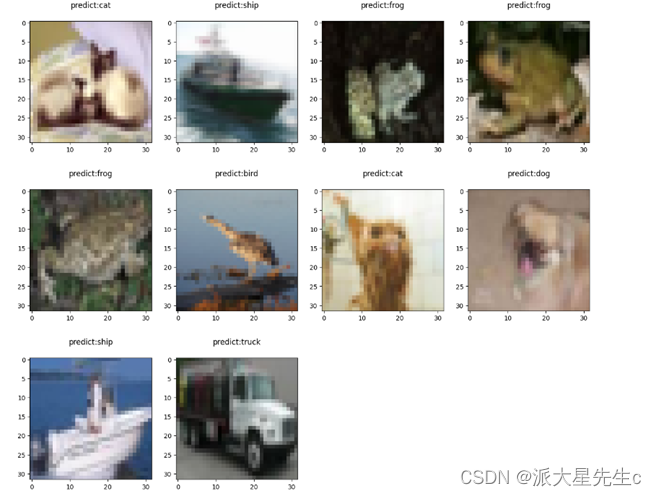
四、模型优化
1、CNN模型
主要的思路就是增加卷积层和池化层 可以在其中加BN层
BN的本质原理:在网络的每一层输入的时候,又插入了一个归一化层,也就是先做一个归一化处理(归一化至:均值0、方差为1),然后再进入网络的下一层。不过文献归一化层,可不像我们想象的那么简单,它是一个可学习、有参数(γ、β)的网络层。
class Model(nn.Module):
def __init__(self):
super(Model, self).__init__()
self.conv1 = nn.Sequential(
nn.Conv2d(3, 12, kernel_size=5, padding=0), # 12*220*220
nn.BatchNorm2d(12),
nn.ReLU()
)
self.conv2 = nn.Sequential(
nn.Conv2d(12, 12, kernel_size=5, padding=0), # 12*216*216
nn.BatchNorm2d(12),
nn.ReLU()
)
self.pool3 = nn.Sequential(
nn.MaxPool2d(2), # 12*108*108
nn.Dropout(0.15)
)
self.conv4 = nn.Sequential(
nn.Conv2d(12, 24, kernel_size=5, padding=0), # 24*104*104
nn.BatchNorm2d(24),
nn.ReLU()
)
self.conv5 = nn.Sequential(
nn.Conv2d(24, 24, kernel_size=5, padding=0), # 24*100*100
nn.BatchNorm2d(24),
nn.ReLU()
)
self.pool6 = nn.Sequential(
nn.MaxPool2d(2), # 24*50*50
nn.Dropout(0.15)
)
self.fc = nn.Sequential(
nn.Linear(24 * 50 * 50, num_classes)
)
def forward(self, x):
batch_size = x.size(0)
x = self.conv1(x) # 卷积-BN-激活
x = self.conv2(x) # 卷积-BN-激活
x = self.pool3(x) # 池化-Drop
x = self.conv4(x) # 卷积-BN-激活
x = self.conv5(x) # 卷积-BN-激活
x = self.pool6(x) # 池化-Drop
x = x.view(batch_size, -1) # flatten 变成全连接网络需要的输入 (batch, 24*50*50) ==> (batch, -1), -1 此处自动算出的是21168
x = self.fc(x)
return x模型结构图可以在进行绘制
NN SVG (alexlenail.me)
2、VGG-16模型
class Vgg16_net(nn.Module):
def __init__(self):
super(Vgg16_net, self).__init__()
self.layer1 = nn.Sequential(
nn.Conv2d(in_channels=3, out_channels=64, kernel_size=3, stride=1, padding=1), # (32-3+2)/1+1=32 32*32*64
nn.BatchNorm2d(64),
# inplace-选择是否进行覆盖运算
# 意思是是否将计算得到的值覆盖之前的值,比如
nn.ReLU(inplace=True),
# 意思就是对从上层网络Conv2d中传递下来的tensor直接进行修改,
# 这样能够节省运算内存,不用多存储其他变量
nn.Conv2d(in_channels=64, out_channels=64, kernel_size=3, stride=1, padding=1),
# (32-3+2)/1+1=32 32*32*64
# Batch Normalization强行将数据拉回到均值为0,方差为1的正太分布上,
# 一方面使得数据分布一致,另一方面避免梯度消失。
nn.BatchNorm2d(64),
nn.ReLU(inplace=True),
nn.MaxPool2d(kernel_size=2, stride=2) # (32-2)/2+1=16 16*16*64
)
self.layer2 = nn.Sequential(
nn.Conv2d(in_channels=64, out_channels=128, kernel_size=3, stride=1, padding=1),
# (16-3+2)/1+1=16 16*16*128
nn.BatchNorm2d(128),
nn.ReLU(inplace=True),
nn.Conv2d(in_channels=128, out_channels=128, kernel_size=3, stride=1, padding=1),
# (16-3+2)/1+1=16 16*16*128
nn.BatchNorm2d(128),
nn.ReLU(inplace=True),
nn.MaxPool2d(2, 2) # (16-2)/2+1=8 8*8*128
)
self.layer3 = nn.Sequential(
nn.Conv2d(in_channels=128, out_channels=256, kernel_size=3, stride=1, padding=1), # (8-3+2)/1+1=8 8*8*256
nn.BatchNorm2d(256),
nn.ReLU(inplace=True),
nn.Conv2d(in_channels=256, out_channels=256, kernel_size=3, stride=1, padding=1), # (8-3+2)/1+1=8 8*8*256
nn.BatchNorm2d(256),
nn.ReLU(inplace=True),
nn.Conv2d(in_channels=256, out_channels=256, kernel_size=3, stride=1, padding=1), # (8-3+2)/1+1=8 8*8*256
nn.BatchNorm2d(256),
nn.ReLU(inplace=True),
nn.MaxPool2d(2, 2) # (8-2)/2+1=4 4*4*256
)
self.layer4 = nn.Sequential(
nn.Conv2d(in_channels=256, out_channels=512, kernel_size=3, stride=1, padding=1),
# (4-3+2)/1+1=4 4*4*512
nn.BatchNorm2d(512),
nn.ReLU(inplace=True),
nn.Conv2d(in_channels=512, out_channels=512, kernel_size=3, stride=1, padding=1),
# (4-3+2)/1+1=4 4*4*512
nn.BatchNorm2d(512),
nn.ReLU(inplace=True),
nn.Conv2d(in_channels=512, out_channels=512, kernel_size=3, stride=1, padding=1),
# (4-3+2)/1+1=4 4*4*512
nn.BatchNorm2d(512),
nn.ReLU(inplace=True),
nn.MaxPool2d(2, 2) # (4-2)/2+1=2 2*2*512
)
self.layer5 = nn.Sequential(
nn.Conv2d(in_channels=512, out_channels=512, kernel_size=3, stride=1, padding=1),
# (2-3+2)/1+1=2 2*2*512
nn.BatchNorm2d(512),
nn.ReLU(inplace=True),
nn.Conv2d(in_channels=512, out_channels=512, kernel_size=3, stride=1, padding=1),
# (2-3+2)/1+1=2 2*2*512
nn.BatchNorm2d(512),
nn.ReLU(inplace=True),
nn.Conv2d(in_channels=512, out_channels=512, kernel_size=3, stride=1, padding=1),
# (2-3+2)/1+1=2 2*2*512
nn.BatchNorm2d(512),
nn.ReLU(inplace=True),
nn.MaxPool2d(2, 2) # (2-2)/2+1=1 1*1*512
)
self.conv = nn.Sequential(
self.layer1,
self.layer2,
self.layer3,
self.layer4,
self.layer5
)
self.fc = nn.Sequential(
# y=xA^T+b x是输入,A是权值,b是偏执,y是输出
# nn.Liner(in_features,out_features,bias)
# in_features:输入x的列数 输入数据:[batchsize,in_features]
# out_freatures:线性变换后输出的y的列数,输出数据的大小是:[batchsize,out_features]
# bias: bool 默认为True
# 线性变换不改变输入矩阵x的行数,仅改变列数
nn.Linear(512, 512),
nn.ReLU(inplace=True),
nn.Dropout(0.5),
nn.Linear(512, 256),
nn.ReLU(inplace=True),
nn.Dropout(0.5),
nn.Linear(256, 10)
)
def forward(self, x):
x = self.conv(x)
# 这里-1表示一个不确定的数,就是你如果不确定你想要reshape成几行,但是你很肯定要reshape成512列
# 那不确定的地方就可以写成-1
# 如果出现x.size(0)表示的是batchsize的值
# x=x.view(x.size(0),-1)
x = x.view(-1, 512)
x = self.fc(x)
return x模型结构图大致如下
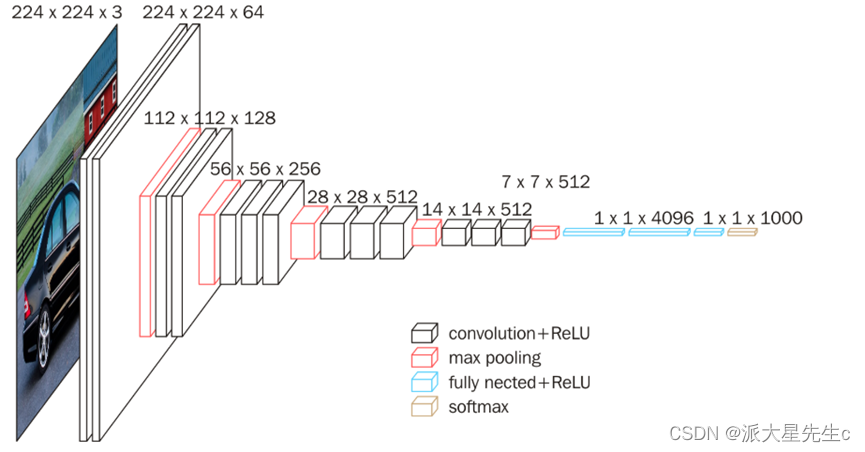

3、Alexnet模型
可以使用 torchvision.models定义神经网络
# 使用torchvision.models定义神经网络
net_a = models.alexnet(num_classes = 10)
print(net_a)
# 定义loss函数:
loss_fn = nn.CrossEntropyLoss()
print(loss_fn)
# 定义优化器
net = net_a
Learning_rate = 0.01 # 学习率
# optimizer = SGD: 基本梯度下降法
# parameters:指明要优化的参数列表
# lr:指明学习率
# optimizer = torch.optim.Adam(model.parameters(), lr = Learning_rate)
optimizer = torch.optim.SGD(net.parameters(), lr=Learning_rate, momentum=0.9)
print(optimizer) 
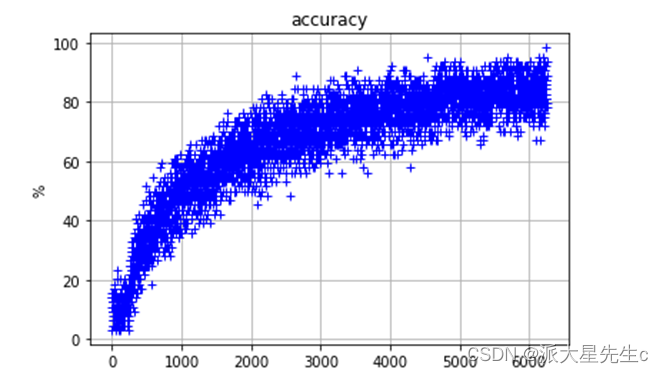
模型结构图

4、Resnet模型
class ResidualBlock(nn.Module):
def __init__(self, in_channels, out_channels, stride = 1, shotcut = None):
super(ResidualBlock, self).__init__()
self.conv1 = conv3x3(in_channels, out_channels,stride)
self.bn1 = nn.BatchNorm2d(out_channels)
self.relu = nn.ReLU(inplace=True)
self.conv2 = conv3x3(out_channels, out_channels)
self.bn2 = nn.BatchNorm2d(out_channels)
self.shotcut = shotcut
def forward(self, x):
residual = x
out = self.conv1(x)
out = self.bn1(out)
out = self.relu(out)
out = self.conv2(out)
out = self.bn2(out)
if self.shotcut:
residual = self.shotcut(x)
out += residual
out = self.relu(out)
return out
class ResNet(nn.Module):
def __init__(self, block, layer, num_classes = 10):
super(ResNet, self).__init__()
self.in_channels = 16
self.conv = conv3x3(3,16)
self.bn = nn.BatchNorm2d(16)
self.relu = nn.ReLU(inplace=True)
self.layer1 = self.make_layer(block, 16, layer[0])
self.layer2 = self.make_layer(block, 32, layer[1], 2)
self.layer3 = self.make_layer(block, 64, layer[2], 2)
self.avg_pool = nn.AvgPool2d(8)
self.fc = nn.Linear(64, num_classes)
def make_layer(self, block, out_channels, blocks, stride = 1):
shotcut = None
if(stride != 1) or (self.in_channels != out_channels):
shotcut = nn.Sequential(
nn.Conv2d(self.in_channels, out_channels,kernel_size=3,stride = stride,padding=1),
nn.BatchNorm2d(out_channels))
layers = []
layers.append(block(self.in_channels, out_channels, stride, shotcut))
for i in range(1, blocks):
layers.append(block(out_channels, out_channels))
self.in_channels = out_channels
return nn.Sequential(*layers)
def forward(self, x):
x = self.conv(x)
x = self.bn(x)
x = self.relu(x)
x = self.layer1(x)
x = self.layer2(x)
x = self.layer3(x)
x = self.avg_pool(x)
x = x.view(x.size(0), -1)
x = self.fc(x)
return x
模型图转自知乎
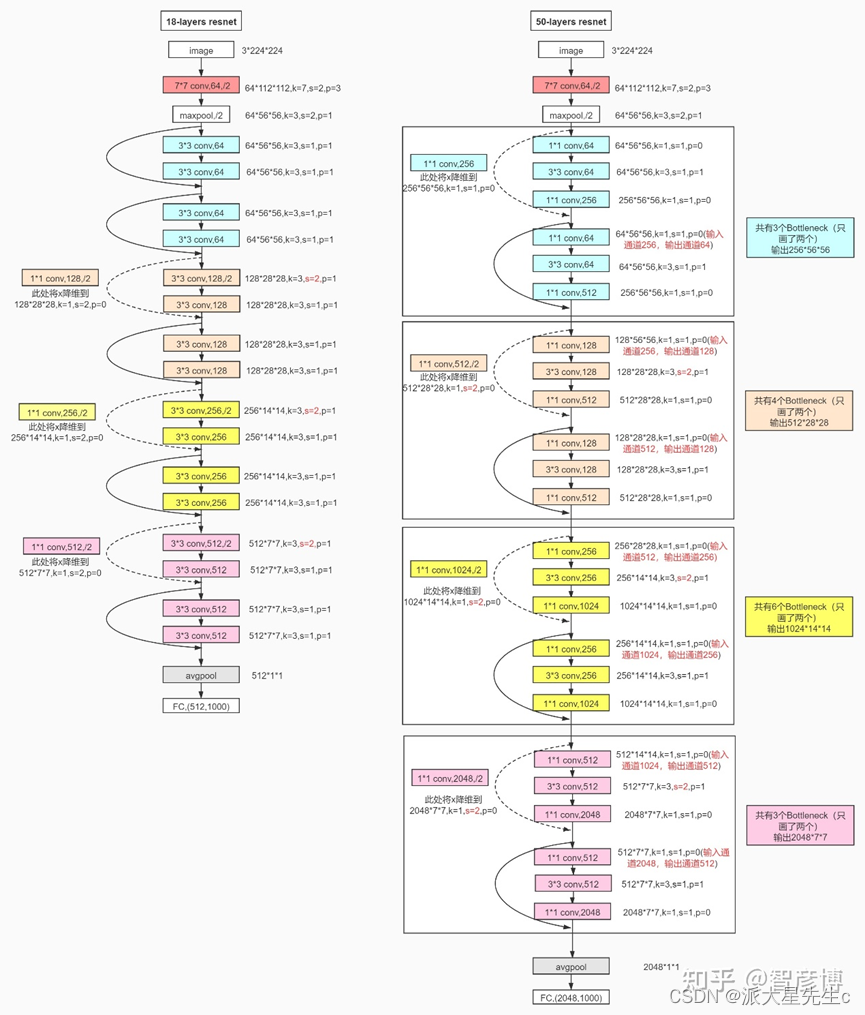
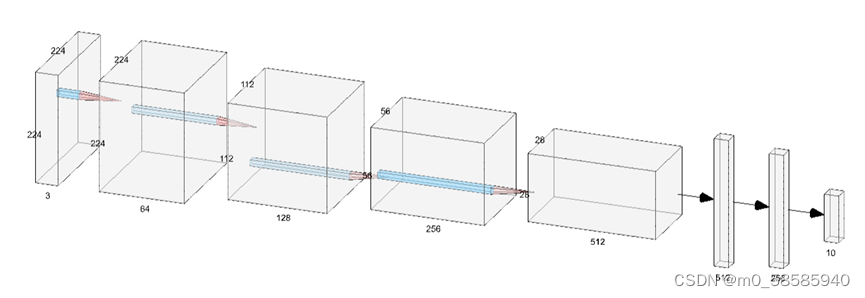
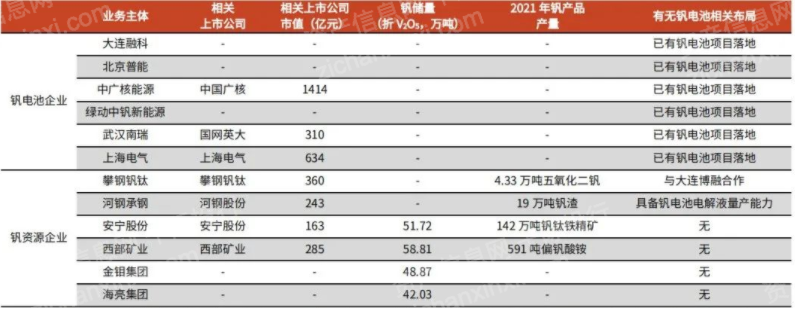
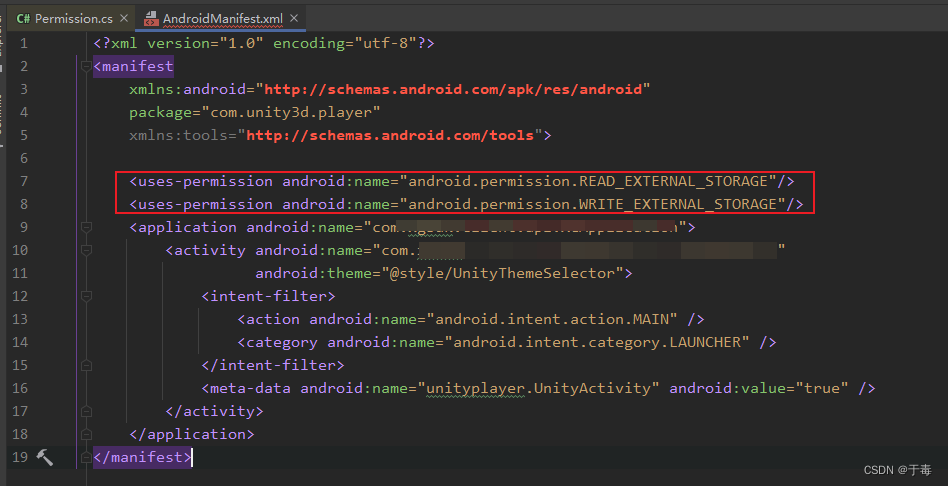
![[附源码]JAVA毕业设计个人信息管理系统(系统+LW)](https://img-blog.csdnimg.cn/f3ed4c3b1c9e462883690461440f89b8.png)
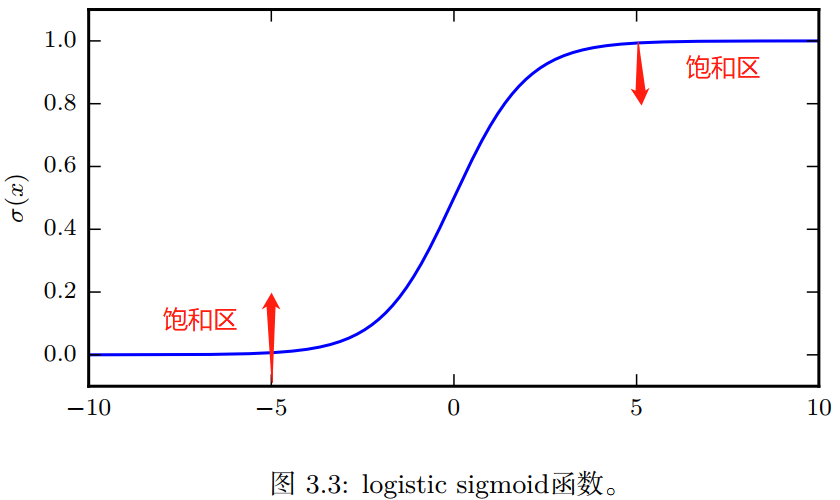



![[附源码]计算机毕业设计JAVA校园环境保护监督系统](https://img-blog.csdnimg.cn/a7c5433087ce4b9f835f0ccf4fc46806.png)
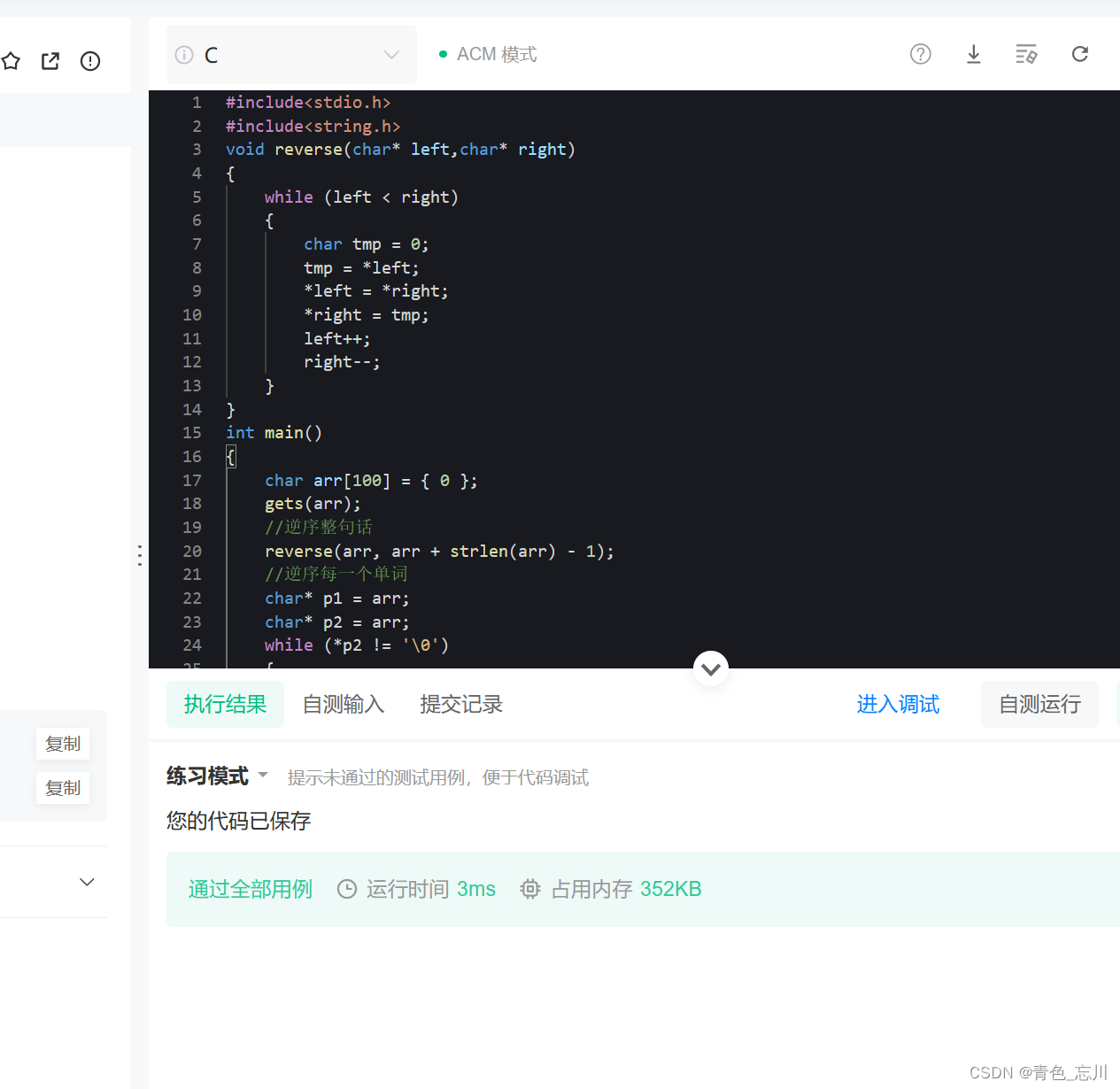







![[附源码]Python计算机毕业设计Django房屋租赁系统](https://img-blog.csdnimg.cn/a6b71b1facf247eab327db5ad9dba07b.png)

